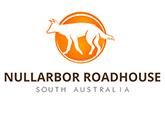Crossing the Nullarbor Plain is easily one of the greatest road journeys for any traveller in search of unique and exciting experiences. This tedious but rewarding trek can certainly bring you closer to nature, as it showcases the natural beauty of the Australian outback and the lesser known highlight of the endeavour: Nullarbor’s rich and diverse wildlife.
Nullarbor’s Land-based Wildlife
Nocturnal wildlife tours give travelers the chance to see emus, wombats and kangaroos. Because they are always mobile, wild camels freely roam around the Nullarbor at random times of the day, particularly during the summer months. Moving from warmer areas in the desert interior to get to the cooler coastal areas, Camelus dromedarius (also known as the One Humped Camel) move in herds, ranging from 10 to 40 per group.
Dingos can also be seen scavenging for food along the vast plains of the Nullarbor, they often visit us at the roadhouse regulary. However, because of their wild nature, feeding them is highly discouraged. One fun fact about dingos, though, is their surprising and somewhat amusing proclivity for stealing travellers’ footwear!
Lizards of varying kinds (Goannas and Australian blue tongue lizards) constitute some of the more interesting wildlife found in the Nullarbor. Different species of birds such as the Wedge Tailed Eagles, Kookaburras and others can also be seen flying over and nesting around the area. And yes, they tend to be as curious about the visitors as the visitors are about them.
Towards The Ocean
Your Nullarbor wildlife experience doesn’t just stop on land, though – you can also take photos, feed, and swim with blue fin tunas, sea lions and dolphins. If you’re into more extreme activities, you can even cage dive with the great white sharks of the Nullarbor! All these activities (other then simply watching) will require you to organise with a tour group.
National and Conservation Parks are scattered across the vast plains. Going through these parks give travellers the chance to go to footprint-free beaches. You may also go bush walking, hiking and sand boarding. Meanwhile, coastal and cliff top walks expose you to stunning scenery (as well as more wildlife).
The Wonders of Ceduna
Around 3 hours east of us (Nullarbor Roadhouse), sits Ceduna. Based on the local Aboriginal word “Chedoona,” which means a place to sit down and rest, it is a solitary hub that travellers visit to unwind in between extreme nature tripping. The white wombat is the most famous kind of wildlife found in Ceduna – some tour packages even allow travellers to cuddle and interact with the little furry animals.
The perfect combination of land-based and marine wildlife, together with exciting activities for nature lovers, definitely attests to Australia’s claim that crossing the Nullarbor is truly the best way to revel in the wonders of the Australian Outback.
To get to know more about Nullarbor’s wildlife, feel free to contact Nullarbor Roadhouse. We would be more than happy to help you choose the perfect itinerary – and to enjoy the ultimate Australian wildlife experience!

